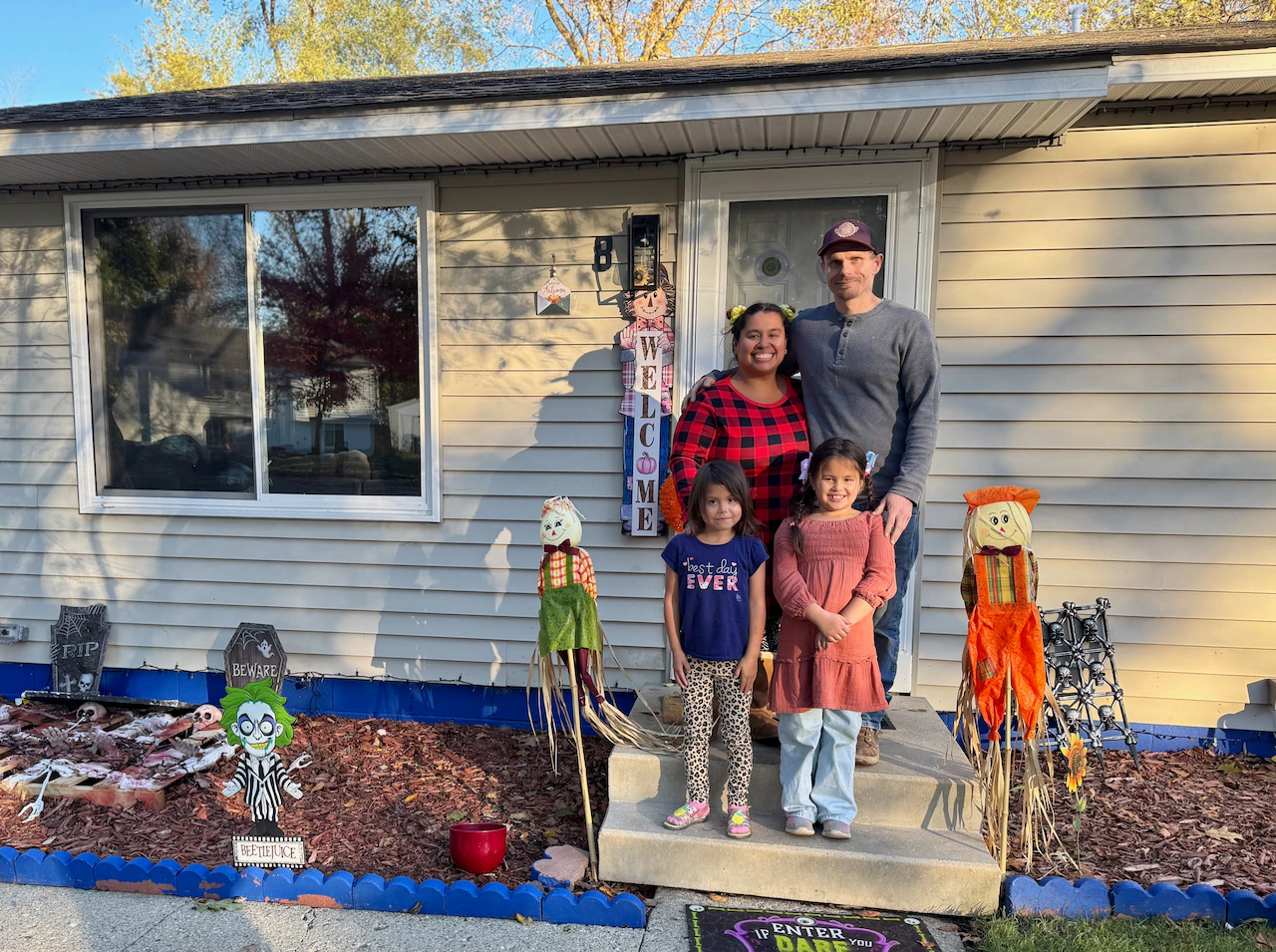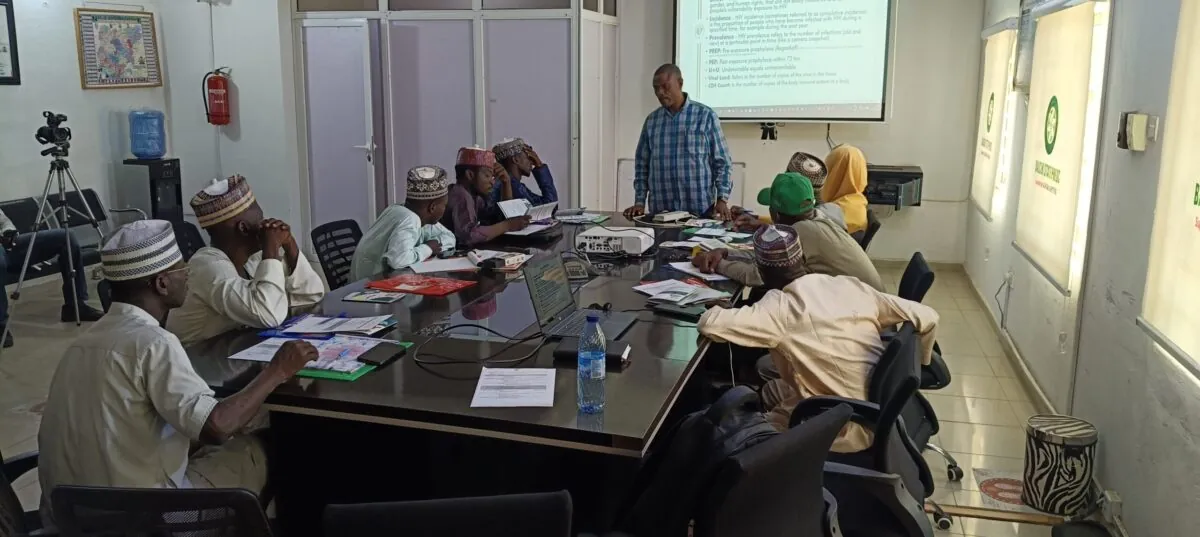Copyright M Live Michigan

ANN ARBOR, MI — Nimsi Paavo says she first moved into the Bryant neighborhood in southeast Ann Arbor as a kid 23 years ago and it’s a place she’s proud to still call home. “I lived here with my mom for a long time and then in 2020 my husband and I bought the house from her,” Paavo, 35, said. The small, three-bedroom house on Plainview Court where they’re raising two children wasn’t in the best condition and costs kept them from doing much remodeling, she said. Then they found out about the neighborhood improvement program led by the city’s sustainability office and the nonprofit Community Action Network, which runs the Bryant Community Center. “It was really beneficial,” Paavo said. “We got new doors, new windows, we got some insulation. We also did the crawl space, the attic, and then they put in something to do with the water.” The improvements this past year have helped a lot, Paavo said. It’s much easier to keep the house warm in cold weather now and it’s lowering energy costs. “We’re very excited,” she said. “We can see the differences.” The city and CAN — with the help of state and federal grants and other funding — are pouring millions of dollars into the Bryant neighborhood. They’re fixing up homes to be more energy efficient, replacing gas appliances with electric ones, installing solar panels to provide renewable energy and planning a large-scale geothermal network to heat and cool homes. The project is aimed at making the socioeconomically diverse community possibly the first existing neighborhood in the nation to become carbon-neutral. Bryant residents say they welcome the infusion of funds and are grateful, but some also are concerned it could accelerate gentrification in what has been one of the few affordable spots in an increasingly pricey Ann Arbor. “That would be my biggest concern,” said Mike Cercone, a 34-year-old carpenter who has lived in the neighborhood over a decade and already is seeing it change. Bryant used to be a poorer neighborhood and now, as houses are flipped and prices rise, he’s noticed newer people coming in driving luxury vehicles, he said. Cercone rented for several years before purchasing a small ranch home for $94,000 six years ago with his brother. It could use some upgrades and he’s thinking about getting in on the program, he said, but he hasn’t yet. He knows the city is just trying to make the neighborhood nice, he said, but he’s worried about zoning changes coming. The city’s vision for Bryant and other neighborhoods, as shown in a new land-use plan expected to be adopted by City Council in early 2026, would allow three-unit condo and apartment buildings to replace single-family homes, and even greater housing density closer to roads like Ellsworth and Stone School. Small homes being fixed up now with public dollars could be purchased and torn down by developers to make way for three-story triplexes and other developments in the coming years if the zoning changes accordingly. At the moment, there’s no guarantee new buildings would maintain the same energy standards and wouldn’t go back to using gas. Missy Stults, the city’s sustainability director, said she doesn’t think the city could put in place deed restrictions to impose conditions on properties, but CAN has some language it’s using in agreements with homeowners. That includes a clause saying homeowners agree not to sell their property for at least five years after improvements are made, barring extenuating circumstances such as bankruptcy, serious illness or death of a vested owner. For rental houses, landlords must agree not to pass through the value of home improvements to renters for at least five years. In the 50-plus houses that have undergone work so far over the past couple years, not a single resident or tenant has moved out, said Derrick Miller, CAN executive director. The city and CAN have spent a lot of time thinking and talking to residents about how they want investments in the neighborhood to work, Stults said, and they’ve had conversations about the possibility of gentrification and ways to reduce that threat. Bryant residents historically have seen disinvestment, Stults said, and the city and CAN have made a choice to be intentional about investments. “The investments we are making are to structures, meaning that they are helping to stabilize housing today,” she said. If a developer demolished existing homes, removing the efficiency benefits invested in them, it would negate something that makes the neighborhood desirable, Stults said. The improvements are allowing residents to live in safe, healthy, affordable homes, Stults said, and it’s helping people who’ve suffered energy cost burdens afford to stay, whereas that choice might have been slipping away. Many are long-term residents who want to stay, she said, and the home upgrades are leading to even greater pride in the neighborhood. Grant funds fueling the Bryant project so far amount to about $17 million, counting city, state, federal and foundation grants, Stults said. That includes a recently accepted $10.8 million federal grant for the geothermal project, which the city must match, putting the total geothermal cost over $20 million. Grant funds also have been used to hire a lawyer to help residents write wills so their homes can stay in the family to accumulate intergenerational wealth, Stults said. Southfield resident Fortesha Neal, 33, said she grew up in the Bryant neighborhood, where her grandparents have lived for several decades. She has been helping them get needed home repairs through the program. They’re still waiting on window replacement and siding work, but they’ve had attic insulation completed, she said. Seeing different generations and new families cherish the neighborhood is special, Neal said. “Back in my time, it was more low-income, people renting homes, and now it’s more families buying homes,” she said, noting it has become more of a middle-class neighborhood. Houses in the neighborhood have sold for anywhere from $109,000 to $360,000 in recent years. One that sold for $163,000 in 2024 is now listed for just under $350,000. The one on Champagne Drive that sold for $360,000 in 2023 previously sold for $254,000 in 2006. The rising prices are still significantly lower than the $676,787 average sales price for a single-family home across the Ann Arbor school district this year. City Council Member Travis Radina, D-3rd Ward, bought his house in the neighborhood for $136,000 in 2017. He doesn’t think zoning changes will mean the end of single-family homes. “I don’t think the city is saying that we want all single-family homes in the city to be replaced,” he said. “We’re saying we should allow for more freedom around the types of housing that we have in our community.” City officials hope a significant increase in housing supply can help balance the market and curb rising prices. Radina and fellow 3rd Ward Council Member Ayesha Ghazi Edwin both said they’re interested in looking more into what the city can do to protect investments being made in Bryant. The improvements are important from a health and equity standpoint as it has been a historically marginalized community, Ghazi Edwin said. She also will not support any policy that threatens residents staying in their homes, she said. She challenges the narrative that increased housing density causes gentrification. It happens when cities restrict housing supply, she said. By allowing housing growth citywide as the city’s plan does, it will prevent displacement and gentrification, she said. The geothermal network and some investments in solar energy and battery storage in the neighborhood likely will be owned by the city’s new sustainability energy utility, which means those investments are likely to stay in the neighborhood, Stults said. If developers destroyed any utility assets, they would have responsibility for repaying the utility, she said. Radina said under current zoning, today’s small homes still could be torn down and replaced with bigger single-family homes, so similar scenarios could play out regardless. He hopes those who bring any new multi-family housing to the neighborhood will choose to be sustainable and connect to the city’s utility to get renewable energy, he said. He’s thinking about opportunities for his own house and lining up an inspection to see what improvements could be made as part of the decarbonization program. He’s encouraged to hear stories of neighbors seeing reduced energy bills and leaky gas appliances being replaced, he said. “The program has been wonderful,” said Deborah Pulk, a 73-year-old Bryant homeowner and retired child care provider. She had an old gas stove replaced because it was putting off too much carbon monoxide, which was a particular concern as she has chronic obstructive pulmonary disease, she said. “Then they put insulation up in my attic,” she said. “And they gave me a new roof and the solar panels, which has been great. This month, my DTE bill is $25. Last month, it was only $11.” Other Bryant homeowners and renters said they’re hoping to get in on the program, citing a range of issues with their homes they’d like addressed. Monisha Encarnacion, a renter who recently moved into the neighborhood, is planning to apply for the program after seeing her neighbors benefit from it. She and her husband, who have their own business doing home improvements and landscaping, moved to Ann Arbor from Jackson. They started looking for something affordable in the area a year ago and it took until recently to find their small home in Bryant, which they lease for $2,200 per month. “We had to go above our price range to get something that is not a slum,” Encarnacion said. It was a pretty good deal, but they’re still dealing with issues like mold in the crawl space, she said. While the neighborhood improvements are great, gentrification is a relevant fear, Encarnacion said. “I think it’s going to help a lot of people and it may end up hurting some people,” she said. Paavo said she and her family are planning to stay and enjoy the improvements to their home for many years to come. She loves her tight-knit neighborhood where her children can safely ride their bikes and neighbors are friendly, she said. “At one point, the neighborhood wasn’t as nice as it is now,” she said. “We actually just had like a party and all our neighbors came because we’re friends with all the neighbors. We love it.”



